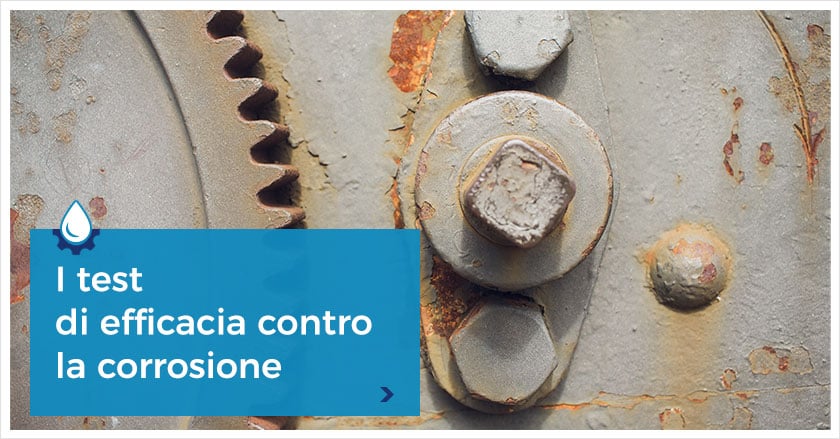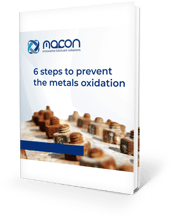
Testing effectiveness against corrosion
Damage to ferrous metals is often an inexorable process that can irreversibly affect and ruin components, with consequent repercussions on your project or machinery.
When we talk about corrosion of a metal, we refer to chemical oxidation corrosion, a process that leads to the formation of rust on the surface of the metal component, making it unsuitable for its functions.
However, this process can be avoided with a good protective lubricant solution.
Corrosion protection: how and when
The point at which corrosion protection must be at a maximum is not, as one might think, exclusively when the component is in operation. Rather, it is necessary to also think about the entire production chain, including the transport and storage phases.
The oxidation process (with consequent rust corrosion) can be triggered not only by the operating conditions but whenever metal components are exposed to moisture and water (such as during transport by sea). Having specific corrosion protection must be one of the first solutions to think factor in.
Anti-corrosion protective lubricants can have specific compositions, depending on your logistics and production process, such as:
- Pastes and gels, suitable for use in mechanical devices, such as actuators, gears and kinematics operating in external parts
- Dry film coatings, such as dispersions of rapidly-evaporating protective waxes in a solvent
- Protective oils of a mineral or synthetic nature, enriched with corrosion inhibiting additives
- Corrosion inhibitors, suitable for testing valves, pumps, heat exchangers and pressure equipment
- Emulsifiable, mineral or synthetic oils suitable for testing
- VpCI, or polyethylene papers, impregnated with corrosion inhibitors that create a protective barrier against saline mists
Testing and selecting the right corrosion protection
Implementing the right corrosion protection for ferrous metals means using temporary or permanent solutions that defend against chemical corrosion without affecting quality.
There are specific tests to verify which solution is best suited to your needs, both in terms of the conditioning procedures of the specimens and the methodologies for classifying the results.
The first test is called ASTM B-117, which subjects specimens of defined dimensions and materials in a wet chamber with 5–20% sodium chloride (NaCl) and defined temperature conditions.
Then we have the ISO 6270/1-1998, used above all to verify the anti-corrosive power of a protective film in a conditioned atmosphere at 100% with humid steam and without saline accelerator.
The ASTM D-610 evaluation method then classifies the anti-corrosive power of coatings subjected to ASTM D-117 and ISO 6270/1, then concludes the ASTM B-117 procedure, used to speed up the ageing process, as in the case painting and galvanic treatments.
Use our free guide to outline the 6 steps you can take to prevent rust from forming.




